Killer high: Health experts, community leaders gather to tackle fentanyl
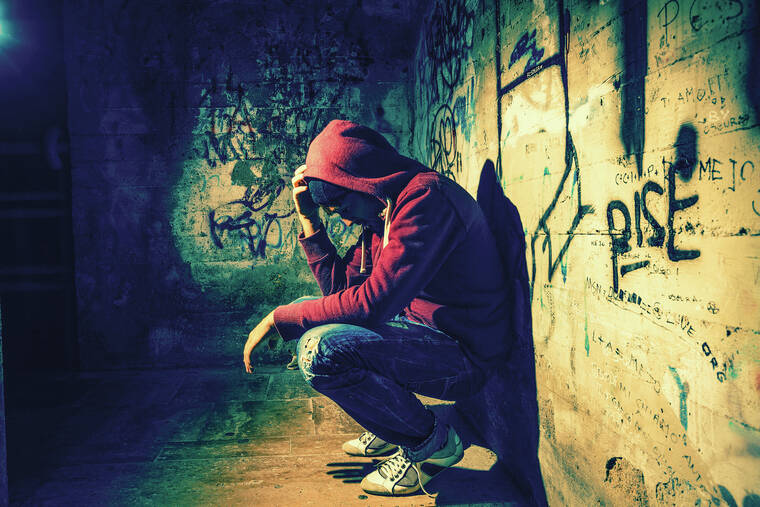
Fentanyl is here. And it’s ravaging the community. That’s the message a panel of experts, including doctors, first responders, police officers, educators, judiciary members and former opioid addicts, had for the community during Hawaii County’s first-ever Fentanyl Awareness Summit held Tuesday.
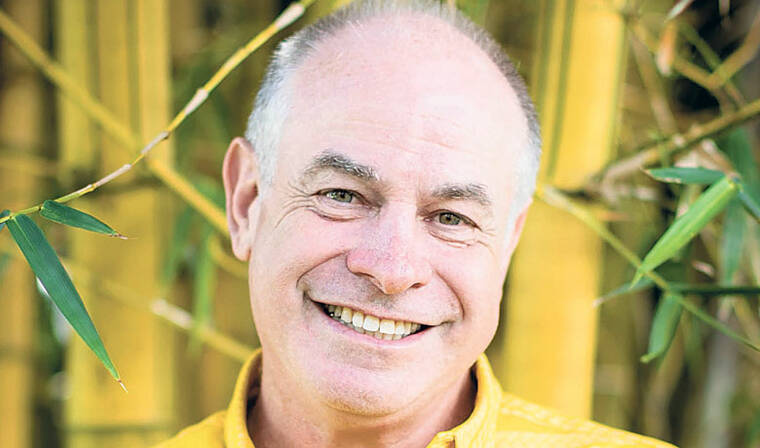
Roth
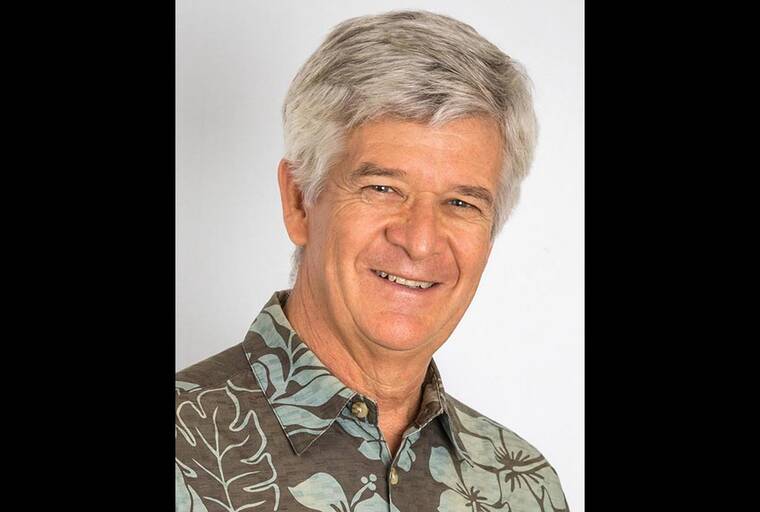
TAAFFE

Galanis
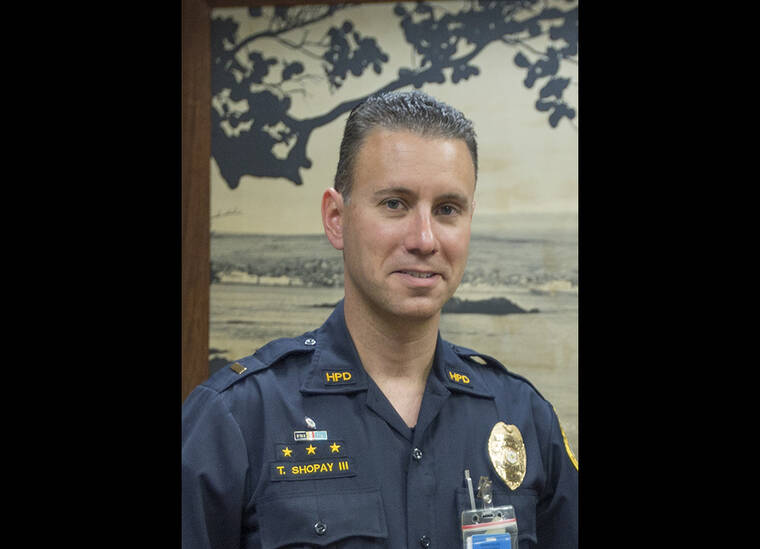
Shopay

Kunz

Bellotto

Wendy M. DeWeese

Heather Lusk

Lavoie
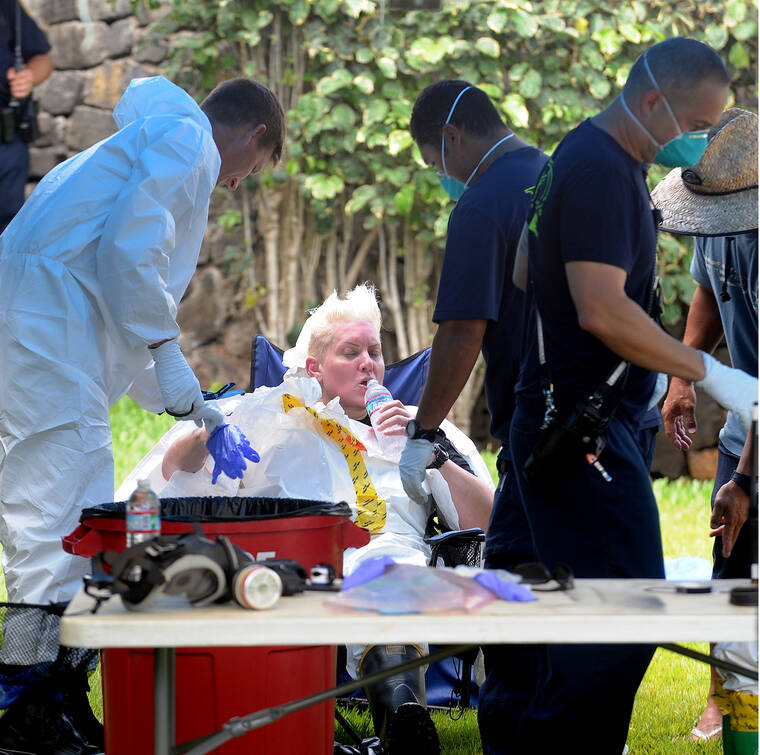
A State Narcotics Enforcement Division officer is treated for heat related issues by Hawaii Fire Department medics July 2, 2021, at Alii Lani Townhouses. (Laura Ruminski/West Hawaii Today)
Fentanyl is here.
Fentanyl is here.
And it’s ravaging the community.
That’s the message a panel of experts, including doctors, first responders, police officers, educators, judiciary members and former opioid addicts, had for the community during Hawaii County’s first-ever Fentanyl Awareness Summit held Tuesday.
“If we don’t do something, we will continue to lose people to overdoses,” said Hawaii County Mayor Mitch Roth. “Those people are our family, those people are friends, those people are children, those people are parents and brothers and sisters.”
The summit, put on by the West Hawaii Community Health Center, warned that the rising fentanyl trend — which started on the mainland in 2013 — has already made its way to the Big Island.
“Some years ago the saying of ‘cook rice, not ice’ — many of you probably remember that, that was a call-to-action then, maybe a little bit late because the methamphetamine issue was already here and had already killed a number of people and had a devastating impact,” said Richard Taaffe, the center’s CEO, referring to efforts in the late 1990s and early 2000s to fight methamphetamine use on the Big Island. “We have an opportunity today to try to get ahead of this issue around addiction, around overdoses and specifically about fentanyl. Fentanyl kills. Bottom line. Fentanyl kills.”
A killer among us
In 2021, over 100,000 people in the U.S died of an overdose, and more than 70% of those overdoses were opioid-related, which includes drugs like heroin and fentanyl. In 1999, 20,000 Americans died of overdose with 2022’s figure expected to be worse than last year.
In Hawaii County, 75% of opioid-related deaths — three in four — included synthetic fentanyl, according to state Department of Health Epidemiologist Dan Galanis.
“The take home here is even though we have lower overdose rates compared to the U.S., our pattern is becoming similar in Hawaii in that most of them are illicit opioids,” he said.
According to the recent Centers for Disease Control and Prevention data, Hawaii County saw an increase of 120% the number of fatal overdoses between April 2020 and March 2021. Between July 2020 and July 2021, 29 fatal overdoses were recorded.
Statewide in 2020 there were 33 fatal overdoses attributed to fentanyl, up from 19 in 2019 and 13 in 2018, according to data presented by Galanis.
Emergency Medical Services are also encountering more instances of possible fentanyl overdose with more than a fifth of the 78 calls for help across the state being on Hawaii Island. In 2020, there were 14 calls for help statewide.
“You can see a huge jump in 2021,” Galanis said. “Twenty-two percent of those calls were for patients in Hawaii County.”
According to Galanis, the amount fentanyl being seized in the state has gone up exponentially from 2016 when 0.2 kilograms annually to nearly 25 kilograms last year.
“More than half of that — 14 kilograms of fentanyl — were seized in Hawaii County last year. Fourteen kilograms, that’s crazy and that’s only what’s seized,” he said. “I don’t know how good the DEA is doing but you can only imagine how much is actually out there.”
Hawaii Police Department Area II Criminal Investigation Section Capt. Thomas Shopay III said law enforcement has been monitoring the drug’s trek across the U.S. and confirmed its presence in the Big Island community. Police are reporting recovering fentanyl almost on a daily basis.
Last summer, police raided an Alii Lani condo and found evidence of suspected fentanyl being extracted from patches. Two adults were arrested and their three children were placed with Child Protective Services.
On Friday, county prosecutors reported that federal prosecutors were taking over a case in which some 2.5 pounds of powder fentanyl — in addition to pills and methamphetamine — were removed from the street last fall.
“We know our trends follow behind the mainland,” he said. “Hopefully, we can make this something we can make a difference on.”
‘It’s more potent than a cyanide’
Fentanyl is the most potent and addictive opioid, and the most deadly drug America has ever known. According to the U.S. Drug Enforcement Administration, the synthetic opioid is 50 to 100 times stronger than any other opioid out there.
“To be honest, it’s more potent than cyanide,” said addiction medical specialist Dr. Kevin Kunz.
Fentanyl entered the scene in 1960 as a legal drug used for end-of-life pain management and childbirth, but it quickly made its way to the black market because of its powerful opioid properties that make it prime for abuse. Street fentanyl is now illegally made in other countries, exported to America and readily available in communities from the East Coast to the western end of Kauai.
“This is the fentanyl we’re talking about today. We call it street fentanyl. It’s not something you can buy at a drug store — you get it from the street. Where is the street? The street is anywhere: It’s in a parking lot, it’s on the corner, it’s in the schools, it’s in social clubs, it’s on the internet and social media from which it’s immediately available,” said Kunz.
What makes street fentanyl so deadly is that it’s often mixed with other drugs, such as marijuana, pills or methamphetamine, and the user unknowingly consumes the drug. A lethal dose is sometimes only the size of a few grains of table salt.
“It’s pressed into these fake pills that look just like real Xanax, real Adderall, real Norco and Vicodin and real oxycodone. So people take these thinking that’s what they are taking and unknowingly end up with fentanyl and never wake up,” said Kunz.
The synthetic opioid affects the lives of young people and children, and 95% of adults who struggle with the disease of addiction began using drugs when they were 21 or younger.
According to Kunz, the leading cause of death for Americans age 18 to 45 is overdose. He noted deaths of teens on Maui from fentanyl overdose, as well as the May 2021 death of 37-year-old University of Hawaii football star Colt Brennan, who was found to have a combination of ice, alcohol and fentanyl in his system.
“When they die what’s left? The sorrow and misery of the families is unspeakable,” he said.
Making changes
For recovering heroin and fentanyl addict Carlos Bellotto, the dangers of fentanyl meant nothing at the time.
“In 2015, I was doing fentanyl and heroin. Everyone was saying you can die from it, but when you tell an addict that the drug is even stronger, I was like ‘I’m gonna do it,’” he said.
Bellotto said he overdosed from fentanyl about six times, and was even pronounced dead on arrival at Hilo Medical Center.
It wasn’t until he hit rock bottom — after serving a year in jail, and realizing he had nowhere to go upon release, that Bellotto reached out for help. He’d burned ties with friends and family members, so when a mentor told him about the Men of Pa’a — a nonprofit dedicated to helping men stay sober — he jumped at the chance.
Bellotto has been sober for four years now, and he manages the clean house for recovering men.
However, the battle isn’t over yet, and Bellotto still sees old friends dying from opioids.
“It hurts a lot when I drive through Hilo, I see my friends out there, I got friends out there dying from this disease. It’s hard for me. I’ve made amends with a lot of my family, but some of them don’t want anything to do with me,” he recounted during the summit.
Members of the judiciary branch agreed; there needs to be more services in the community to aid addicts on their road to recovery.
“If there’s one call to action to leave you all with: It is to try to get more services into the community because without services, the Judiciary cannot do much,” said panel member Judge Wendy DeWeese, who oversees Big Island Drug Court in Kona in addition to Veterans Treatment Court and Circuit Court duties. “It can lock people up but they will use drugs in jail and they will use when they come out of jail and they will make associations in jail with people who will help them use when they are in jail and get out of jail.
“They are not making the kind of associations that the Men of Pa‘a just described for you folks,” she continued.
DeWeese asked the panel to develop drug tests for fentanyl, and to focus on services that will help people recover.
“We need to educate judges, probation officers and everyone in judiciary branch. We need testing. Currently, our drug tests do not test for fentanyl. And we need services. We need a way to help people. We don’t need anymore jails,” she said.
Saving our youth
Hawaii Island’s schools are also taking a proactive approach with the hope of saving the lives of pupils on campus.
“When fentanyl increases in the community, it increases in the schools,” said panelist Janette Snelling, West Hawaii Area Complex superintendent for the Department of Education. “In terms of how we can respond, the common thread that a committed and sustained effort among schools, parents, community members and students is vitally important.”
Snelling covered the various disciplinary policies of the department and the possible next steps the state should take. Per Snelling, fentanyl is an illicit drug that falls under the highest offense category under Chapter 19, which addresses student misconduct, and can result in 92 days suspension.
“It is important to note that while Chapter 19 provides definitions and guidelines, each school utilizes a process through their school discipline plan that considers each circumstance separately and differentiates for the needs of each student,” she explained. “We have the CRAFT (Community Reinforcement and Family Training) assessment that is given and administered to determine the level of risk for a student and assist in determining the level of support needed for our students. Beyond the disciplinary consequences the school’s response is really meant to balance accountability with restorative support.”
In the event an overdose occurs on campus, Snelling said keiki health nurses are being given the tools to save lives in the event of a possible overdose on campus. She stated during Tuesday’s summit “we’ve had tragedy strike us in West Hawaii this year for families and communities, and it’s heartbreaking.”
“In partnership with the University of Hawaii, we have keiki health nurses currently stationed in each of our sub-complexes: Konawaena Elementary, Kealakehe High School and soon at Honokaa High School and Kohala High School,” she said.
She added a “committed and sustained effort” among schools, parents, community partners and students is needed to respond, address and ultimately solve the issue.
“It is vitally important that we give our children the tools to make decisions that lead them away from both intentional and unintentional contact with fentanyl. In order to do that it starts with a firm establishing a firm understanding and awareness of the dangers of fentanyl and the fentanyl epidemic in all aspects. It’s really applying a true-community school model where schools by nature of our daily contact with students and parents serve as the hub for collaboration among the resources without community. We know that we cannot do this alone.”
It takes a village
Tools to save lives are available to the community.
Heather Lusk, executive director of the Hawaii Health and Harm Reduction Center and founder of the Hawaii Opioid Initiative, said that over 20,000 doses of naloxone have been provided to law enforcement and first responders, community members and users across the state since Act 68 went into effect in 2016. The law seeks to reduce opioid-related drug overdoses by encouraging the use of opioid antagonists to assist individuals experiencing or at risk of experiencing an opioid-related drug overdose.
Community members can receive naloxone for free via mail after completing a 15- to 20-minute educational video at hhhrc.org.
In addition, thanks to an Overdose to Action Grant and the state Department of Health, three sites on the Big Island have been trained by the center in overdose prevention and distribution of naloxone: West Hawaii Community Health Center, BISAC (Big Island Substance Abuse Council) and Kumukahi Health and Wellness.
“We’ve got to carry Narcan. We’ve got to get it out there widely. That’s the difference of having it there to save a life versus watching somebody pass away in front of you,” Alysa Lavoie, a social worker with the West Hawaii Community Health Center, said.
And more resources are on the way, including fentanyl test strips, Lusk said
“We are in a pilot study with those ourselves. There are a lot of new technologies coming down the pipe that will allow us to help us support people in staying alive until they are ready and able to get on the path to recovery,” she said.
The discussion on fentanyl on the Big Island will continue March 4 with a Zoom meeting from noon to 2 p.m. by the Hawaii County Fentanyl Taskforce. More information — as well as a host of resources — can be found at https://www.westhawaiichc.org/programs/dontdiehi/.
To watch Tuesday’s summit, visit https://fb.watch/bqzTHnxnQG.
Do you or someone you know need help with addiction? Call the Hawaii Cares line at (800) 753-6879 24 hours a day, 7 days a week.


